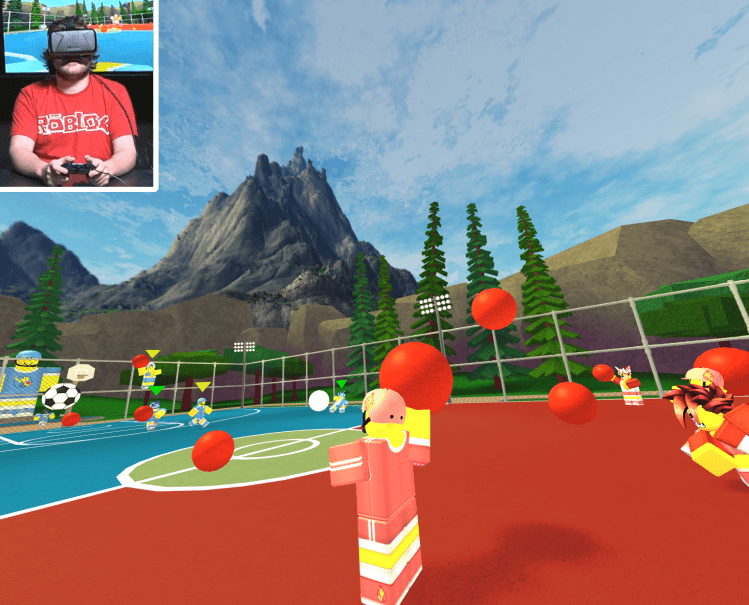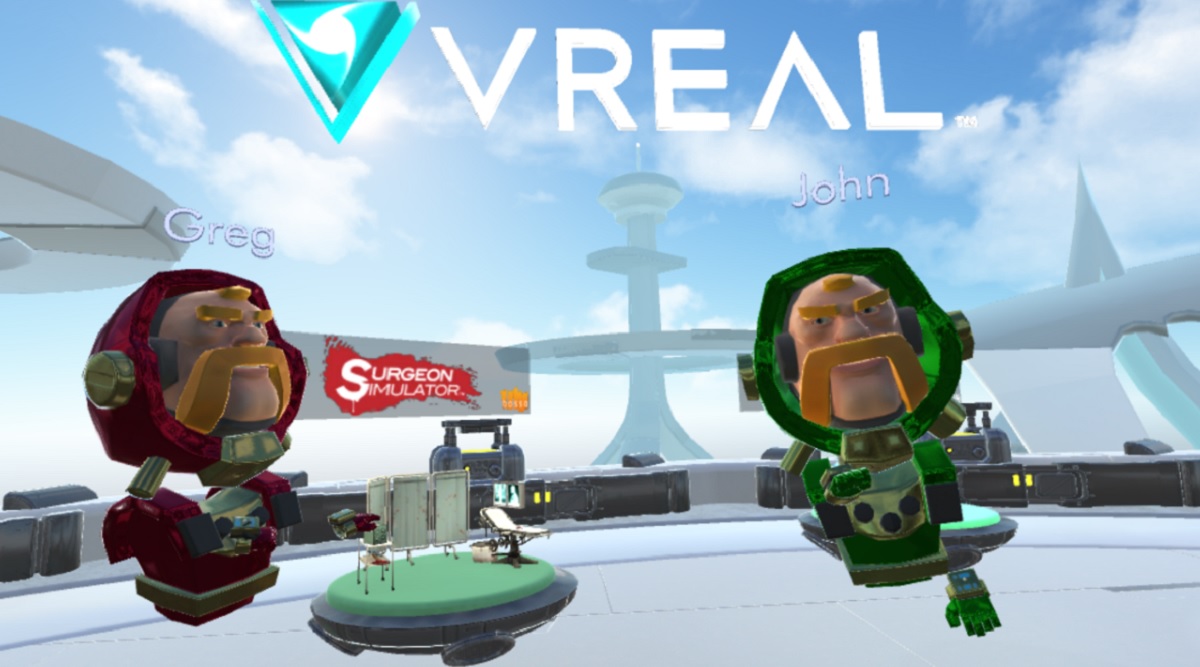GamesBeat: With this new idea of social VR, what kind of gaming experiences that we’re used to represent something that would work better as a social VR experience?
Hooper: I think it’s still too early to say. It’s clear that heavy movement, first-person shooter type games will be challenging in VR. That said, I’m sure people are working on ways to overcome those challenges. Heavily story-based games don’t traditionally stream very well. People feel like they’re ruining the story. You do tend to see things that are more strategic, tactical, or competitive.
The way I think about it, I can sit in my ivory tower and say, “This is how it’ll work,” or I can take the tools and technology out to the streamers and influencers and say, “We built this. You guys tell us how to use it.”
One of the things I find inspiring about streaming communities is, if you go to a Twitch con and meet one of these kids, they’re not college grads. They’re young. Some have just come out of service jobs. But they’ve created these online communities around themselves purely through force of personality. Whatever their thing is. I don’t want to be the guy who says, “I don’t think you should do this,” because frankly, I’m not their audience. And these young people are way more creative than I am when it comes to creating engaging content.
They’ll take a game that you never thought would be interesting to watch, and they’ll figure out a way to engage people as they play. I think our job, really, is to provide the great tools, a little bit of guidance, and then let the influencers run with it.
Baszucki: User-generated content platforms create an [incredible] way of discovering new types of gameplay, the types of gameplay that will be most applicable to a platform. At Roblox, we’re kind of running a Star Search or American Idol for game creators. What we see are new, emergent types of social gameplay.
Games can run to a point where they have 20,000 people playing multiple instances of some of these creations. You see weird things, like a hide and seek simulator that gets very popular; 10,000 or 15,000 people want to play it at the same time. One of the top experiences on Roblox is called Work at a Pizza Parlor. Who would have thought that experience would get played 200 million times? It’s all about either cooking pizzas, working the check stand, delivering pizzas, or driving a pizza truck. [User-generated content (UGC)] can be an engine, just as it is on YouTube, for the discovery of emergent gameplay. It’ll be the place where we find good matches for VR over time.
GamesBeat: It’s interesting that you talk about talent shows because it’s something I think of as well. Xbox 360 had that 1 vs. 100 digital game show a while back. It was a cool idea that they didn’t sustain for very long. But that idea of all these people with their headsets on who get placed into a virtual world — you’re the next contestant, come on down — is a really cool idea.
Is that how it’s working in Roblox? Is it people making things together, or is it somebody making something by themselves and sharing it? Where is the social aspect?
Baszucki: The social aspect, where we believe the social comes together, even more so than the co-creation, is the co-experience. Friends getting together, having a common interest in where they want to hang out, and having enough long-tail content created by users for them to find new and interesting things as well as. If we wanted to find the Roman Colosseum, a Civil War simulator, the Taj Mahal, there’s enough UGC on these platforms out there that you can find that and hang out with your friends. The social aspect, more than creation, is getting the feeling with your friends that you’re doing something together and experiencing that level of co-experience.
GamesBeat: Todd, your user-generated content isn’t something you create so much as something you show — somebody playing a game or sharing an experience. I guess the challenge there is how people react to the social elements in what you’re watching, how you define that.
Hooper: One thing you forget sometimes is that streaming is a show. It may not be a big-budget Hollywood production, but it is individuals putting on a performance. One of the things that brought that home to me, when we started, my chief streamer — Keith’s a lovely guy — but he’s a total hipster. Very dry sense of humor. Then our recruiter, a young woman named Allie, our community manager — she’s a streamer in real life. She’s been doing social games stuff for a while. The minute she put on a headset and started doing streams, it was completely different. She was doing a show. It was 10 times the entertainment level that Keith could provide.
Now, Keith doesn’t go home and stream at night. But Allie goes home and streams at night. You can tell, that same thought process — “How do I keep people entertained; how do I greet people,” — just simple things like, “Hey, welcome to the stream!” I’ve picked up on a lot of that stuff as well now. We had never done yoga in VR when Keith was streaming. Allie was like, “Let’s do some yoga!” Hey, why not?
Part of it is really that you have to get yourself into the mindset of a person that is putting on a show and think about what they can do. You see that kind of behavior in online communities now, and I think the same will come across in VR.
GamesBeat: What you’re doing is similar to the Twitch model, where we saw this market beginning. You had people who were like hosts playing games, and they had an audience. Do you think those people will transition to VR? Will that be sooner or later?
Hooper: We’re definitely seeing a lot of interest from people that are Twitch streamers and YouTube streamers. It’s very much a generational thing. If you look at that audience, the numbers that Twitch has given out, the average age is 14 to 24. They go home at night and watch 90 minutes of streaming. They don’t watch broadcast TV like their parents do.
Another generational thing we’ve noticed, when we put people who are more my age group into a VR headset and tell them to watch this game, they don’t get it at all. “Why would I watch someone else play a game?” When people that are younger come in, they understand it. “Oh, yeah, she’s playing the game, and I’m just hanging out. I get it.” There’s a bit of a disconnect there between generations. Also, there’s the novelty of VR. That has worn off on 2D screens. It’ll wear off on VR. People will see this more as an opportunity to socialize.
GamesBeat: Dave, you brought up this historical application or almost classroom stuff. Instead of getting the dead frog out there and dissecting it, you could just do it in virtual reality. Is that something that’s an interesting possibility as far as user-generated content?
Baszucki: We haven’t done it yet, but when we peruse and put a filter over Roblox with the education lens, it’s really incredible. We have a lot of parents who get excited about everyone in their family playing Bird Simulator together. It’s pretty accurate. In VR, you are the bird. On PC, you’re just sitting back behind it. Without knowing it, you’re actually learning quite a bit. It teaches about ecosystems and survival, predators, all that.
I do believe that ultimately, consumers will drive these types of 3D immersive platforms. But as a byproduct, we’ll find educational material created by the long tail of UGC. Just as if you put that educational filter on YouTube today, you’ll find a lot of great stuff.



